Two years ago, I picked up a field-grown Korean hornbeam salvaged from the fire that struck Telperion Farms in 2020. The tree had a fun trunk but there was room to improve the roots so I started an air-layer.

After making the cut
I’d just heard about an interesting approach to layering and wanted to give it a try. Rather than explain it, here’s a photo of the next step.

Fresh concrete around the base of the trunk
The previous year, Nao Tokutake had given this approach a try and claimed great success with it. But why use concrete to make the layer?
One challenge of ground-layering (air-layers at or near ground level) is that the old roots can grow up into the new soil around the layer making it hard to tell which roots belong to the layer and which to the rest of the tree. By using a layer of concrete, you can avoid this problem by creating a solid barrier between the new and old roots.
After pouring the concrete, I added a layer of moss to preserve extra moisture where I hoped the new roots would grow.

White sphagnum moss
The last step was to fill the pot with fresh soil.

Initial work complete
The one step I’d skipped was adding root hormone around the cut. Nao didn’t remember using it and he had such good results that he didn’t expect it was necessary. I was curious so I tried it that way.
I’d started the layer in May as it’s a great month to start layers. The following winter, I took a look at the roots. As luck would have it, there were very few roots! The standard approach in this case is to reopen the cut area (while preserving at least some of the new callus) and apply root hormone.
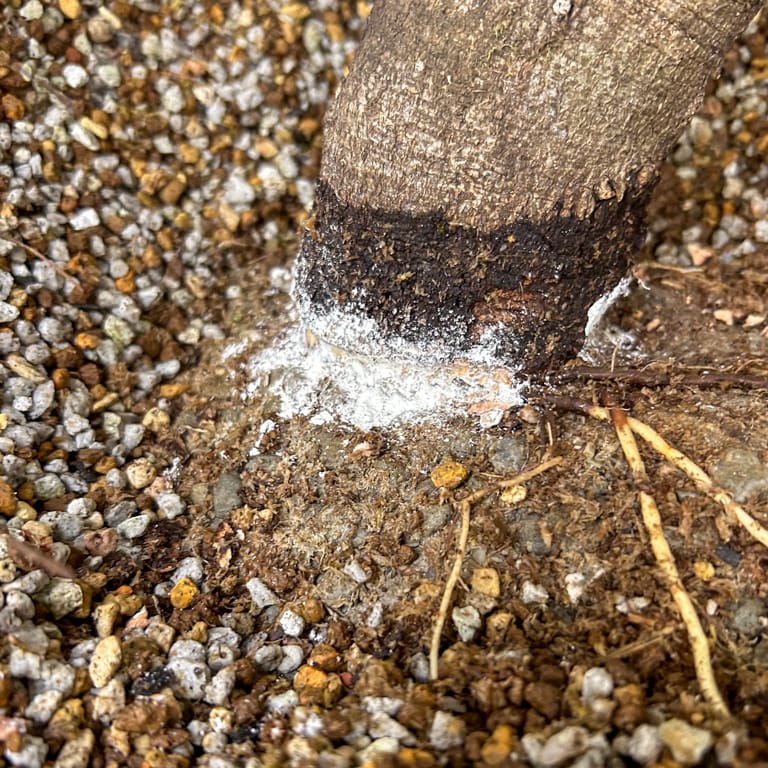
Root hormone around the cut site
I reapplied moss and soil and gave the tree another year to grow. It didn’t grow much, but it stayed healthy. When the tree started to wake from dormancy in early April, I removed it from the pot.
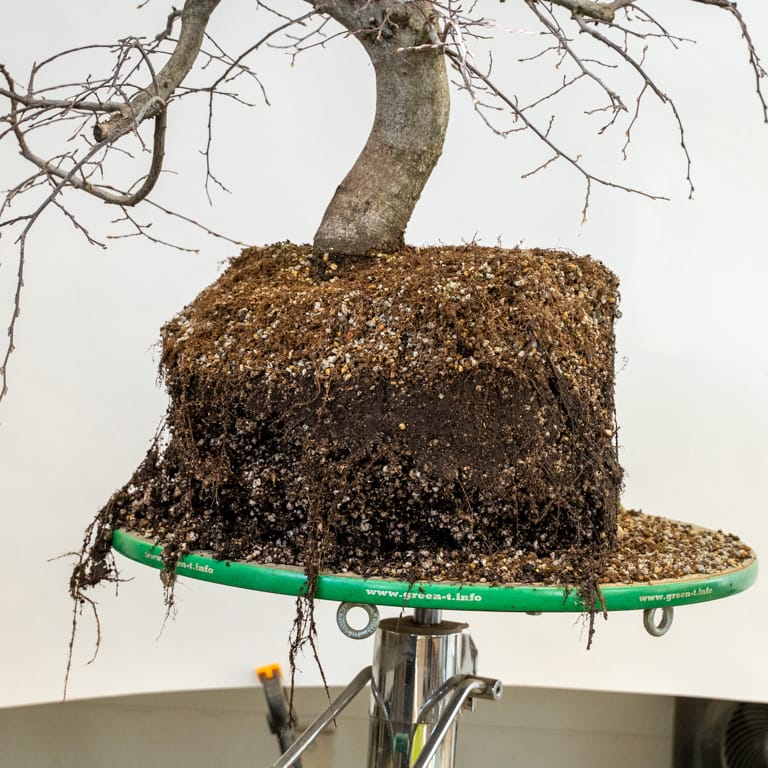
New soil and old soil
After chipping away at the old roots for a few minutes, it became clear why the tree hadn’t grown much – the tree had almost no roots at all!
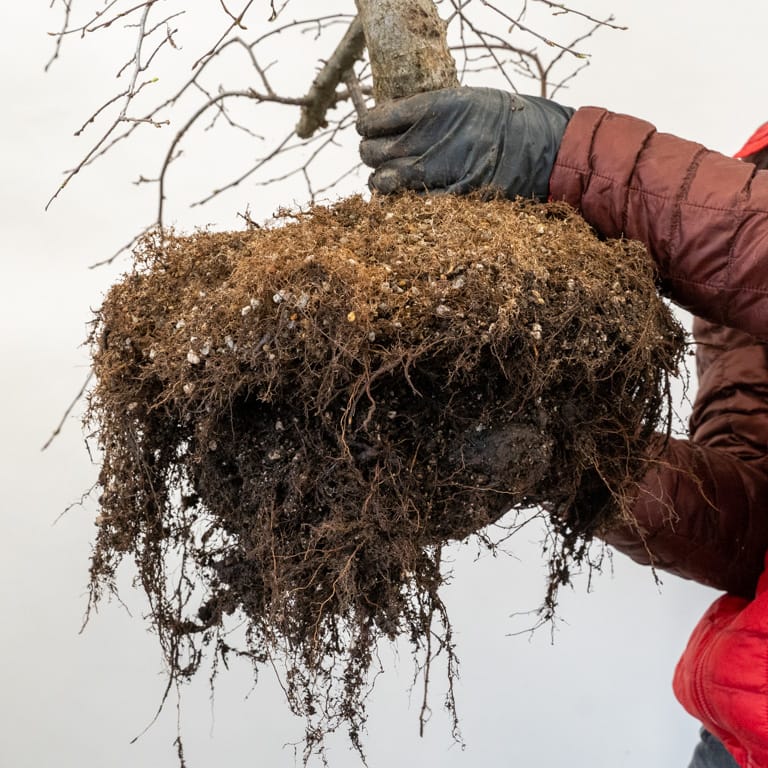
Healthy new roots above a few straggly old roots
(Thanks for the help Steven!)
It hadn’t occurred to me when I started the layer in 2022 that the tree didn’t have many roots as it was healthy and pushing new shoots, but it turns out the tree was growing from its reserves and not from a healthy root mass. I’m usually more conservative about getting trees healthy before starting layers, but I was curious to try a new technique and figured the tree was strong enough to push new roots with or without many roots. Knowing what I know now about the process, I’d still proceed with the layer, but I’d be sure to use rooting hormones.
The next step was to remove the giant taproot with a reciprocating saw. With the big root gone, it was easy to see the concrete disc supporting the new roots.
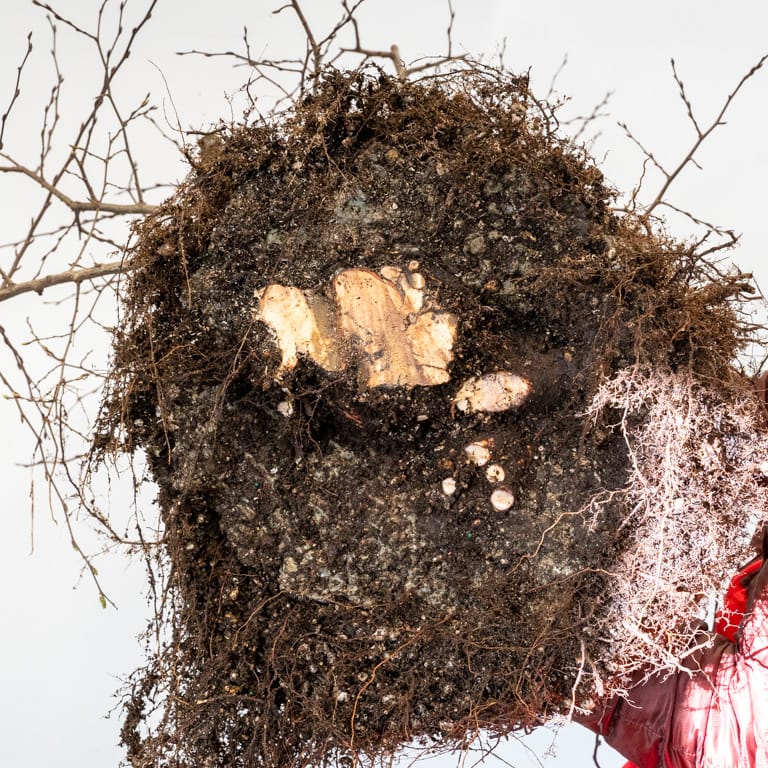
Concrete collar around the cut taproot
I chipped away at the concrete with a two pound hammer and chisel to reveal a mat of fine roots.
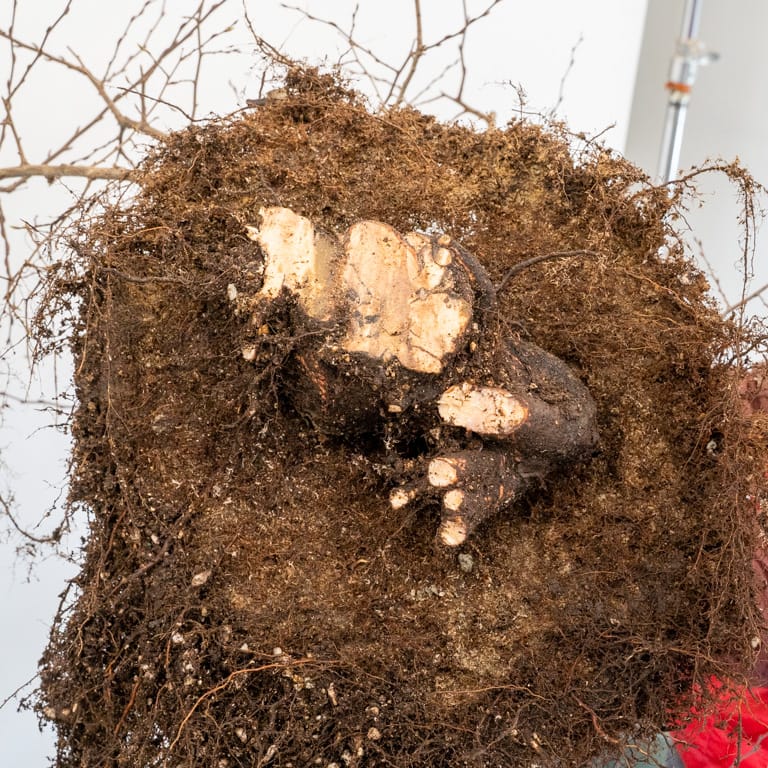
After removing the concrete
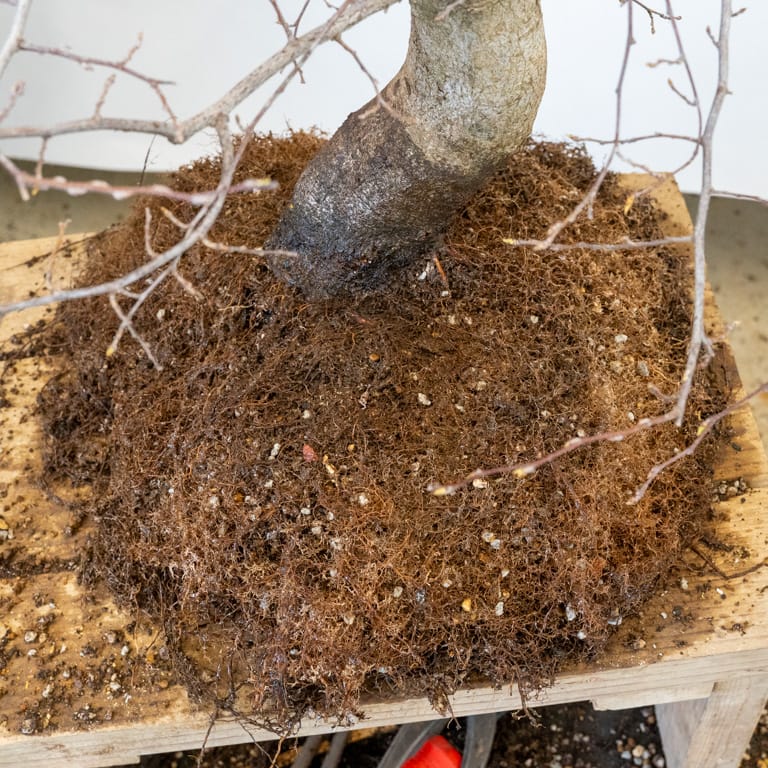
New roots
I left the base of the taproot for the time being as it’ll support the weight of the tree in the pot. I can remove it in a few years once the new roots are better established.
Here’s the tree after repotting it in a plastic container.
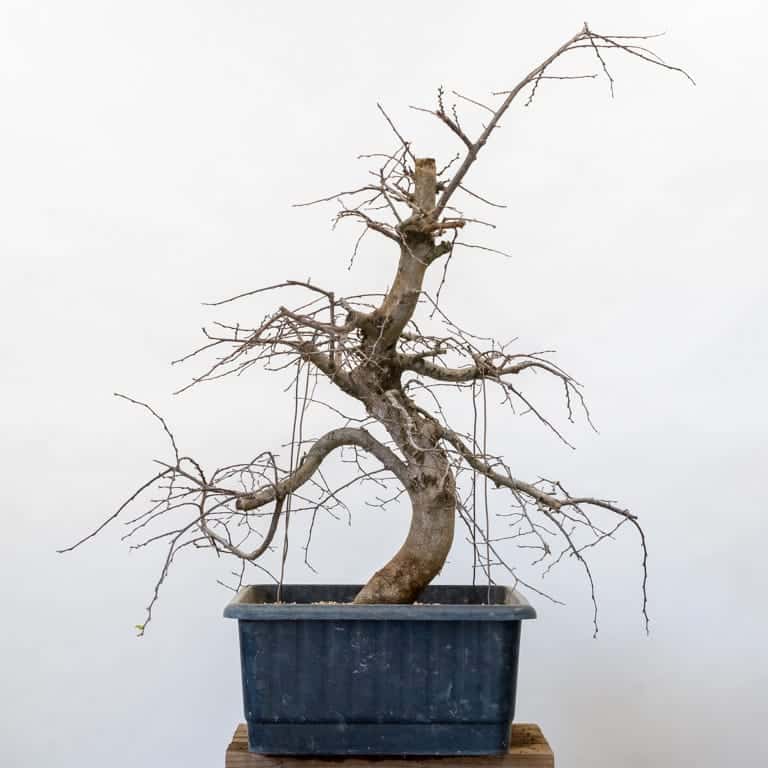
Repotting complete
Because trying a new technique on just one tree isn’t much of an experiment, I decided to start two at the same time. The process, and results, were similar.
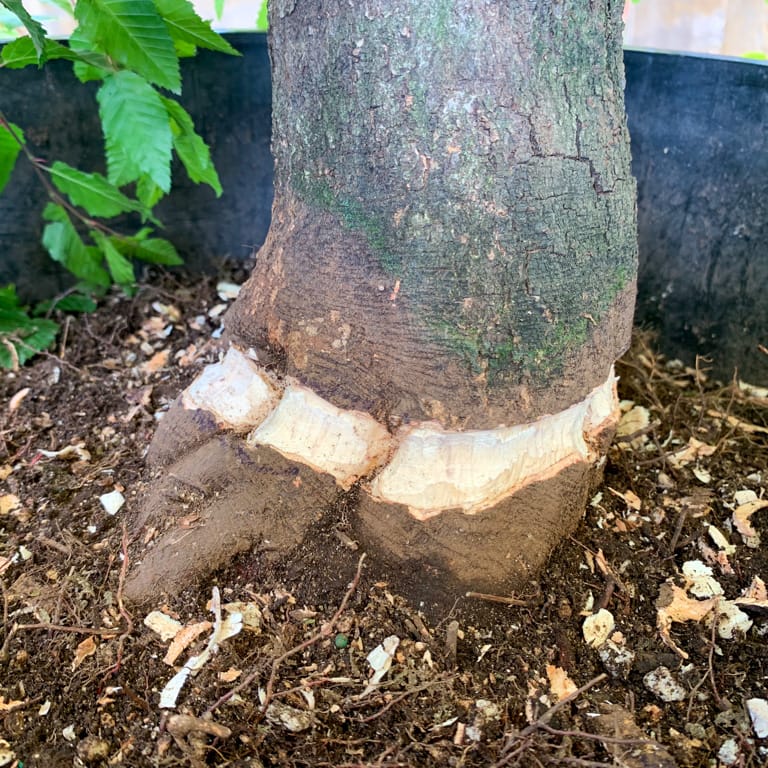
The second layer
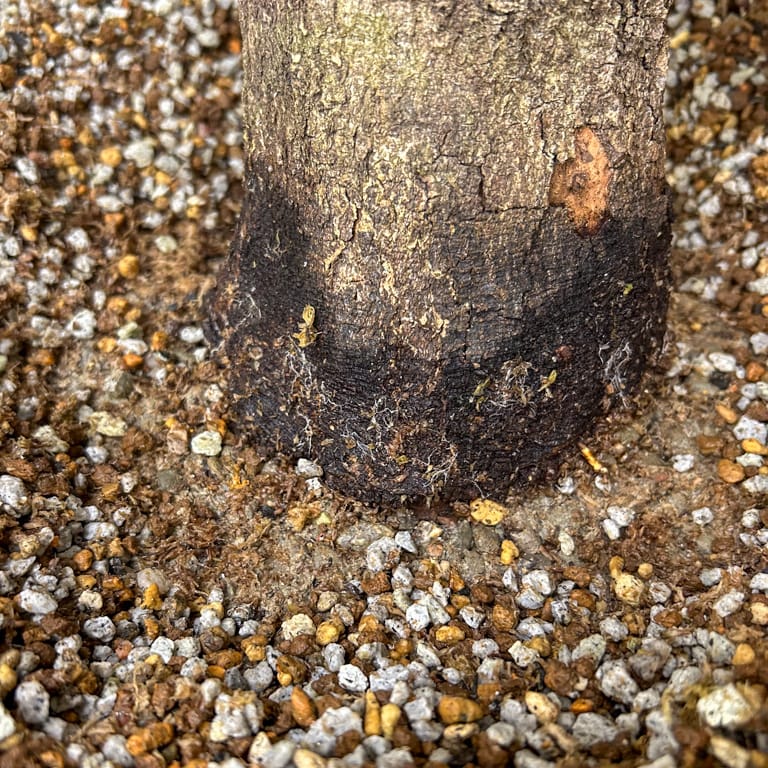
A single new root
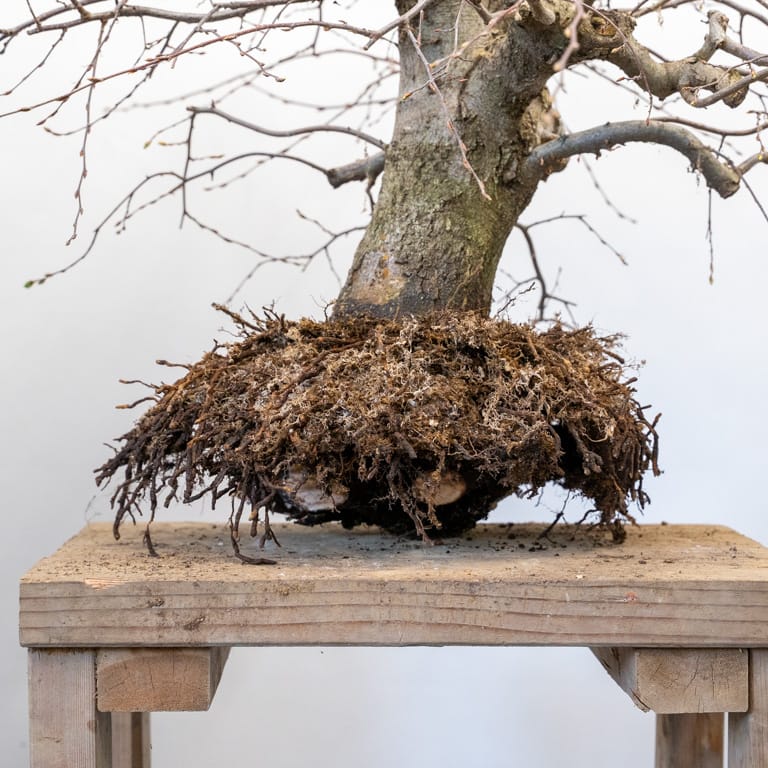
After separating the layer one year later
The roots were far more coarse on the second tree – I’m not sure why – and fairly well distributed around the trunk.
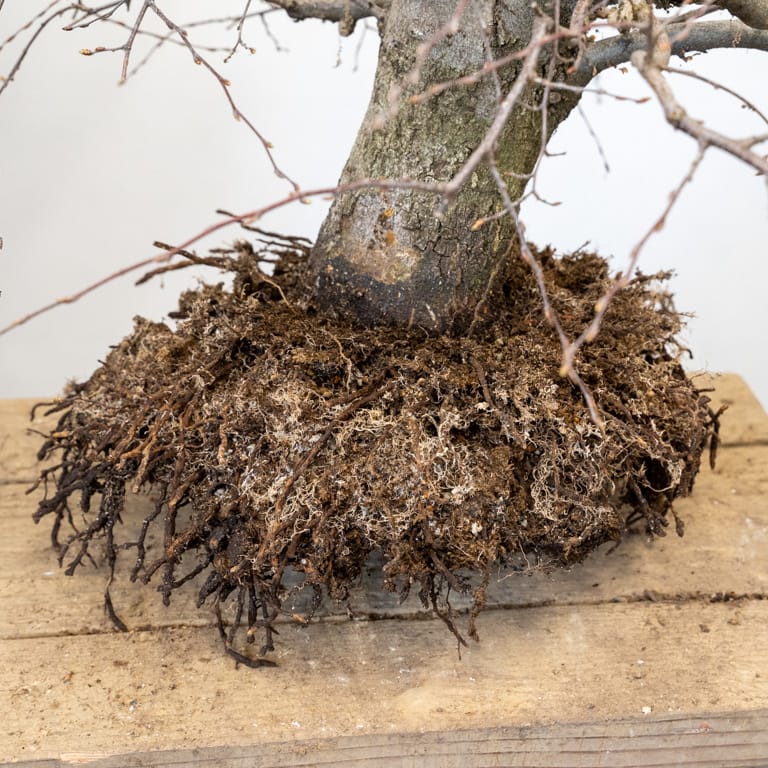
New roots
Removing the old roots on the second tree was a chore even with the help of the reciprocating saw.
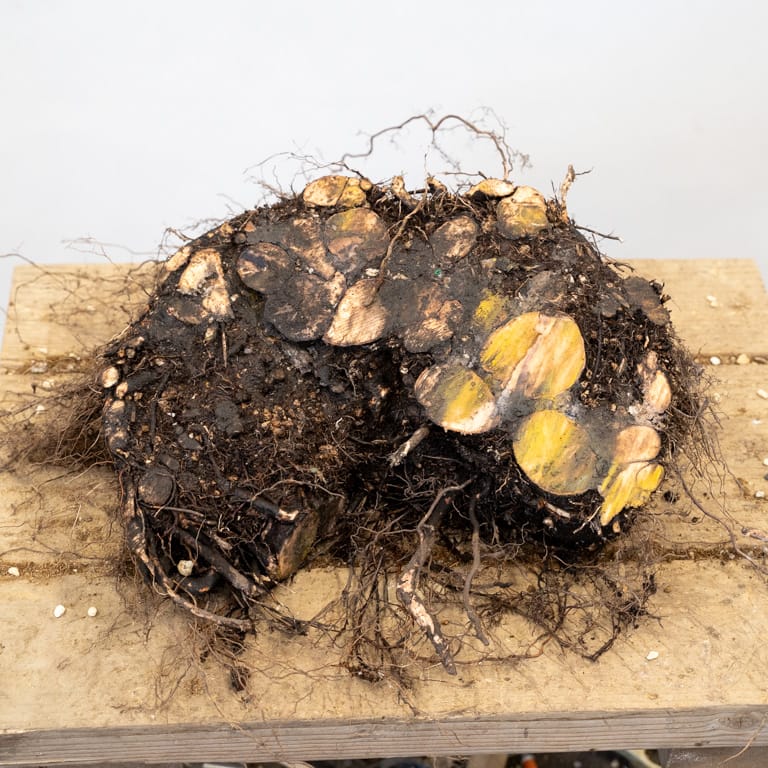
Old roots
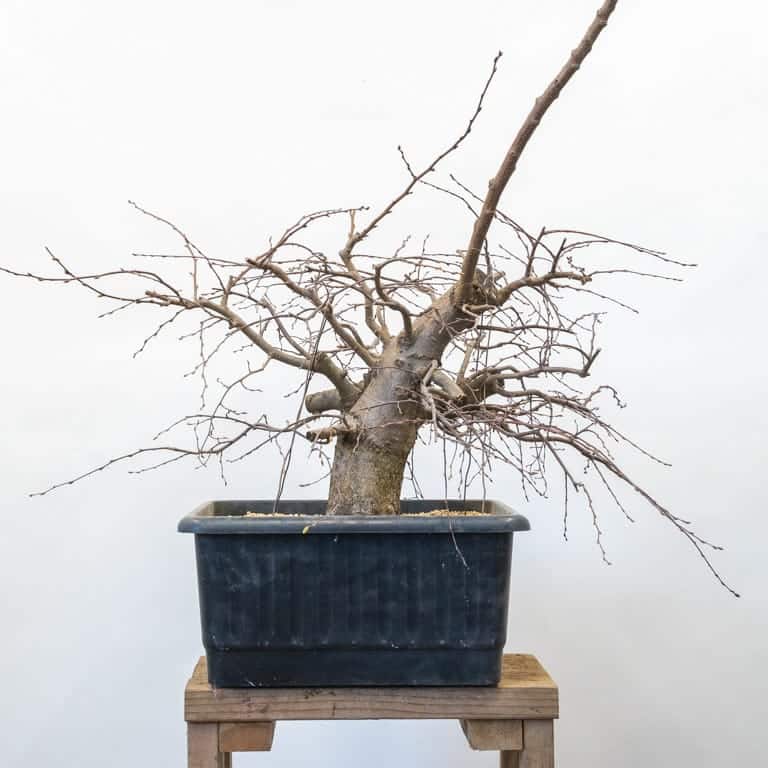
Repotting complete
Although it would have been possible to create bonsai with the original roots on these trees, by layering them, I have far more options when it’s time to find the front of the trees, let alone find containers for them!
To help the new roots get established, I’ll let the trees grow freely for a year or two and will put off repotting for two to three years. Styling can begin when the trees show signs of vigor, possibly within one or two years.
Pacific Bonsai Expo Updates
- For everyone who submitted trees to this year’s event, thank you! The jury members have an extremely strong pool of candidates to select from which makes us excited to see what this year’s show will look like. We plan to notify everyone who submitted trees about the results of the jury process in June.
- Ticket sales are coming – we’re working on a few more back-end details and will be announcing ticket sales later this month or next month. More info is coming soon.
- Once ticket sales are underway, we’ll prepare a list of ways in which you can support the event by become a sponsor, a donor, or a volunteer. In the meantime, learn about what we’ve been working on at the Bonsai Wire Podcast.
Subscribe to Bonsai Tonight
New Posts Delivered Every Tuesday and Friday
Charlie Mosse says
I knew a guy who did this decades ago on a stone fruit, Apricot I think. He said that he had had good luck with the method on a couple of trees. He was trying again with abiut 10 treees. He passed so I never saw the results of his last tries. It certainly does work….that is a lot of roots. Something new for you to show the bonsai community.
Stan says
Another excellent post, Jonas! I have some trees I’d like to improve their nebari by getting new roots in some areas but without going higher on their trunks as those are good as they’re and I don’t want to shorten them further. I’ve played with an idea to wound their bark (by drilling small shallow holes) at the points I wish to get new roots, to apply a rooting hormone to the holes, to add and keep moist sphagnum moss around, and wait for the desired results. Do you have an experience with something similar? If yes, it’d be great and appreciated if you share. If not, it still would be great to hear your opinion if it’s worth to try. Thanks a lot.
Jonas Dupuich says
Thanks Stan! I’ve seen a number of references to the technique but I don’t know that I’ve seen reliable good results. Root grafting and ground layering are much more popular approaches. If you have a good candidate to experiment with (maybe don’t start with your favorite trees), I’d give it a go.
Kevin K says
Excellent demonstration! I was wondering in the concrete had no bad effects on the new roots? When making things like hypertufa pots, it’s always said to soak the new pot of days to leach out all the lime from the concrete. I figured you would have mentioned it , if seen. But just wondering. TIA
Jonas Dupuich says
Thanks, Kevin! I was curious about that too, but figured since it’s a somewhat common approach that it would work out. I’ll look out for any evidence that might be to the contrary.
meeleng claxton says
I am very impressed with this Air Layering method u tried and generously sharing the insightful details.
Bravo.
I just arrived US n reside here n will pursue more on bonsai here. Prior in Singapore I worked for Bonsai- inc n has done lots of repotting of bonsai of all sizes.
Each tree is unique n generallt we can’t harm trees that hv thick n agressive roots ( I called it ginseng roots). Species I work wth are Ebony blackwood, Ponemella, Kinzhu, Premna Serrafotilia, Raintrees,Maple n Buxus .
However the species like Shimpaku, I dare not cut its roots if the size is Mame or Shohin when repoting. Reason is often the roots died n the tree gone. Many cases of RIP from people that visited n look for solution tree browning. Root roting.
Pine , I encountered same challenges, even Kifusho size.
Roots are very delicate subject matter.
Michael says
This is great, but why not just use landscaping fabric?
Jonas Dupuich says
Landscape fabric is great, but I wanted to try a substance that made a better seal against the trunk (to prevent roots from below from growing up into the new soil) and provided the added benefit of making the root environment below the barrier less hospitable for root growth (decreased water and gas exchange below the concrete). This may slow tree growth (it likely did in this case) but it also may have encouraged new roots to grow at the layer site.